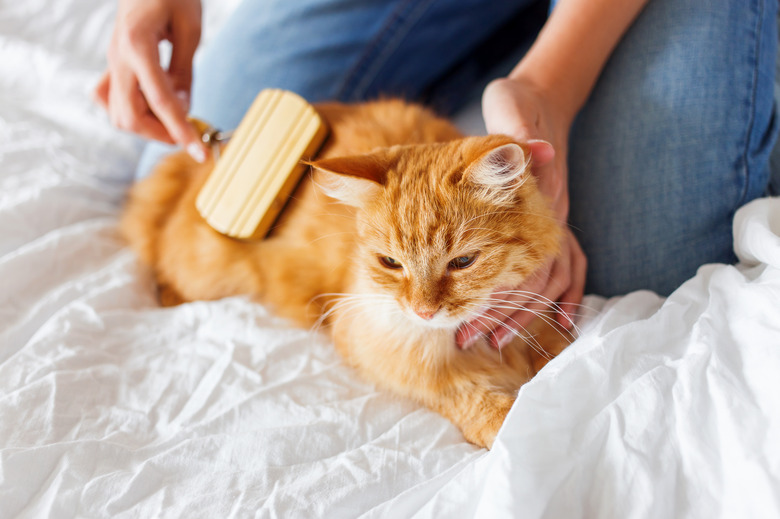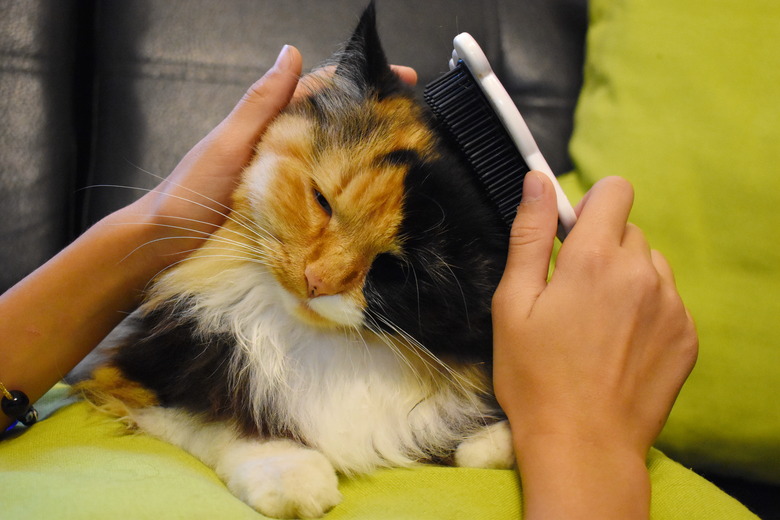Should I Brush My Cat?
Your cat is constantly licking herself, but it's nothing to be worried about. In fact, she's just grooming herself, which is perfectly normal behavior. Sometimes, however, your cat needs help with grooming those spots she just cannot reach. That's when you need to step in and do regular brushings to help her out.
Knowing how often to brush your cat will depend on how long her fur is and how much help she needs grooming. You'll help with reducing hairballs, getting rid of dead hair, avoiding skin problems, and much more.
Why brush your cat?
Why brush your cat?
Cat's hair grows in cycles, and at the end of a cycle, they have a lot of dead hair that can end up all over your house or turn into a hairball that your cat ingests. Plus, regular brushings can help you better spot fleas that may be on your cat.
If your cat is older and has trouble grooming herself, you'll be helping her out a great deal by brushing her. You'll also be able to bond with your cat by showing her that you want her to be comfortable and happy.
How to brush your cat
How to brush your cat
First, you'll need to choose a brush that is suitable for your cat. For a longhaired cat, invest in a slanted slicker brush or a mat breaker. For a shorthaired cat or a cat with medium-length hair, use a dual-sided brush or a shedding comb. Both longhaired cats and shorthaired cats could benefit from a mitt brush or a shedding blade.
You'll want to brush your cat when she is relaxed. To remove the dead hair, brush against the direction in which your cat's hair is growing. Then, switch directions, and as you're brushing, get rid of any excess hair.
Let's say your cat has skin problems, like dandruff. If you notice white flakes when brushing your cat, ask your vet what to do. Likely, you'll have to put your cat on a diet high in omega oils, rule out any parasitic issues, make sure your cat is properly hydrated, and determine if your cat has any allergies. If you see any other skin problems occurring, call your vet right away to ensure that your cat is healthy.
How often to groom
How often to groom
How often to brush a cat depends on what kind of hair your cat has. Ideally, longhaired cats should be brushed every single day, because their hair tends to get matted easily. If you have a medium-haired or shorthaired cat, brushing her daily or several times a week is recommended.
There is always a risk of grooming too much, however, which can cause bald patches or may irritate your cat's skin. If you notice any skin problems, contact your vet as soon as possible.
Reading your cat’s body language
Reading your cat's body language
You want to do regular brushings for your cat, but you aren't sure that she actually likes them. That's why learning how to read your cat's body language is so important.
If your cat is ball-shaped and trying to look small, then she is anxious or fearful. If her body is facing you and she has a normal posture, then she is feeling good and should be receptive if you try to brush her. If she is standing sideways and her back is arched, then she is in an aggressive mood.
Figuring out why your cat may be anxious is critical. If she is in an aggressive mood, let her play with her toys and don't attempt to brush her. You need to catch her at the right time, which is when she is in a relaxed mood, in order for the brushing to be successful.
Additional cat grooming tips
Additional cat grooming tips
Along with regular brushings, your cat needs to be cleaned and groomed in other ways as well. If your cat smells or gets dirty, then you should bathe her. If your cat has had a lot of earwax or ear infections in the past, then you may need to clean her ears with a solution that your vet recommends. Don't clean your cat's ears if they are inflamed or red, and never use a Q-tip.
Since cats tend to jump all over the place, they can easily scratch their paws. Regularly inspecting your cat's paws and looking for any signs of injury is important. You should trim your cat's nails 10 to 14 days is recommended, but be sure to only clip the white part of the nail and not the pink part, where the blood vessels and nerves are located.
Making sure your cat has clean, healthy teeth is an important part of the grooming process, too. Check to make sure her gums are pink and firm and not red or white. You can buy a toothbrush for your cat and brush her teeth regularly. You should also make a habit out of checking your cat's eyes. The area surrounding her eyeball should be bright and white. If you notice any crusty substance building up, wipe her eyes with a wet cotton ball away from the corner of her eye.

